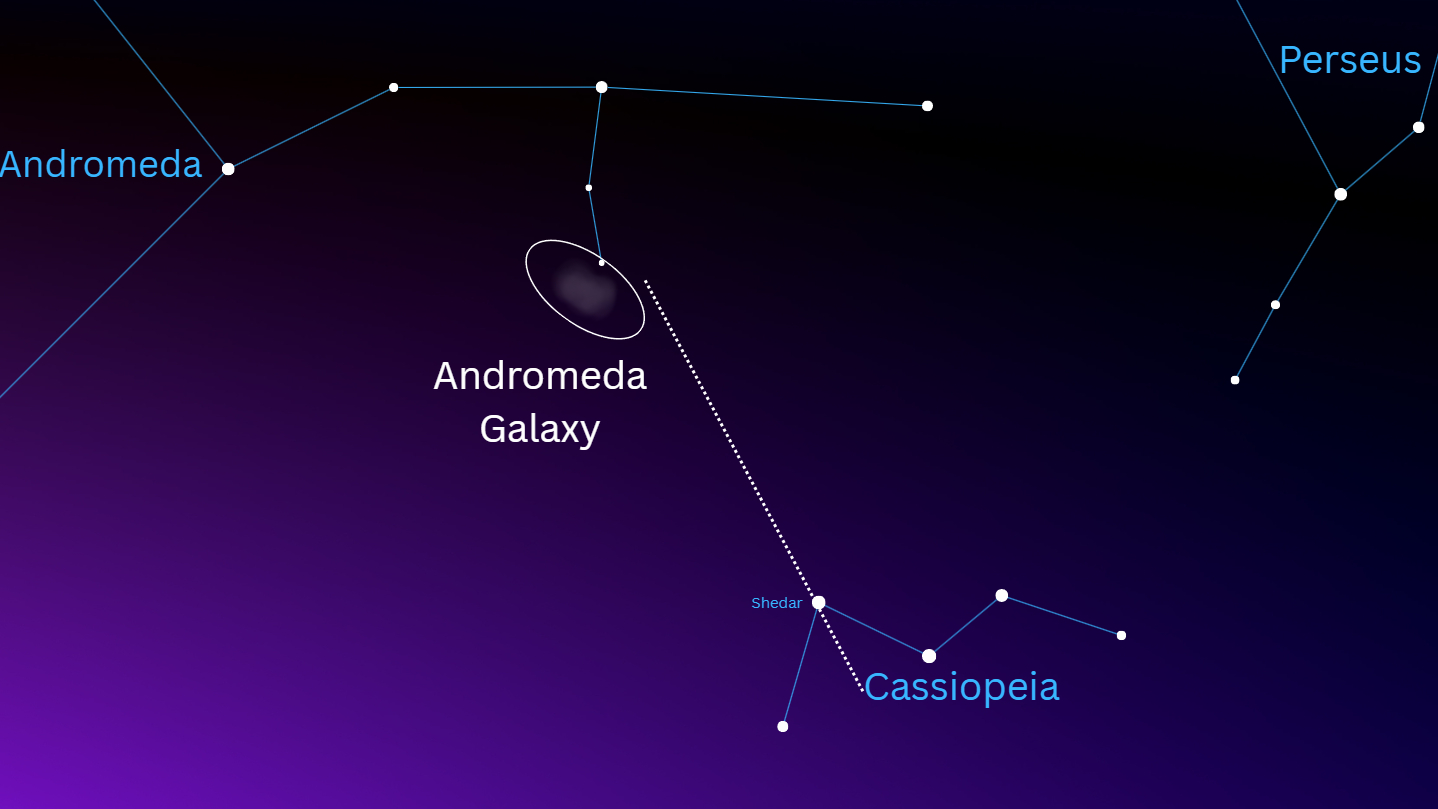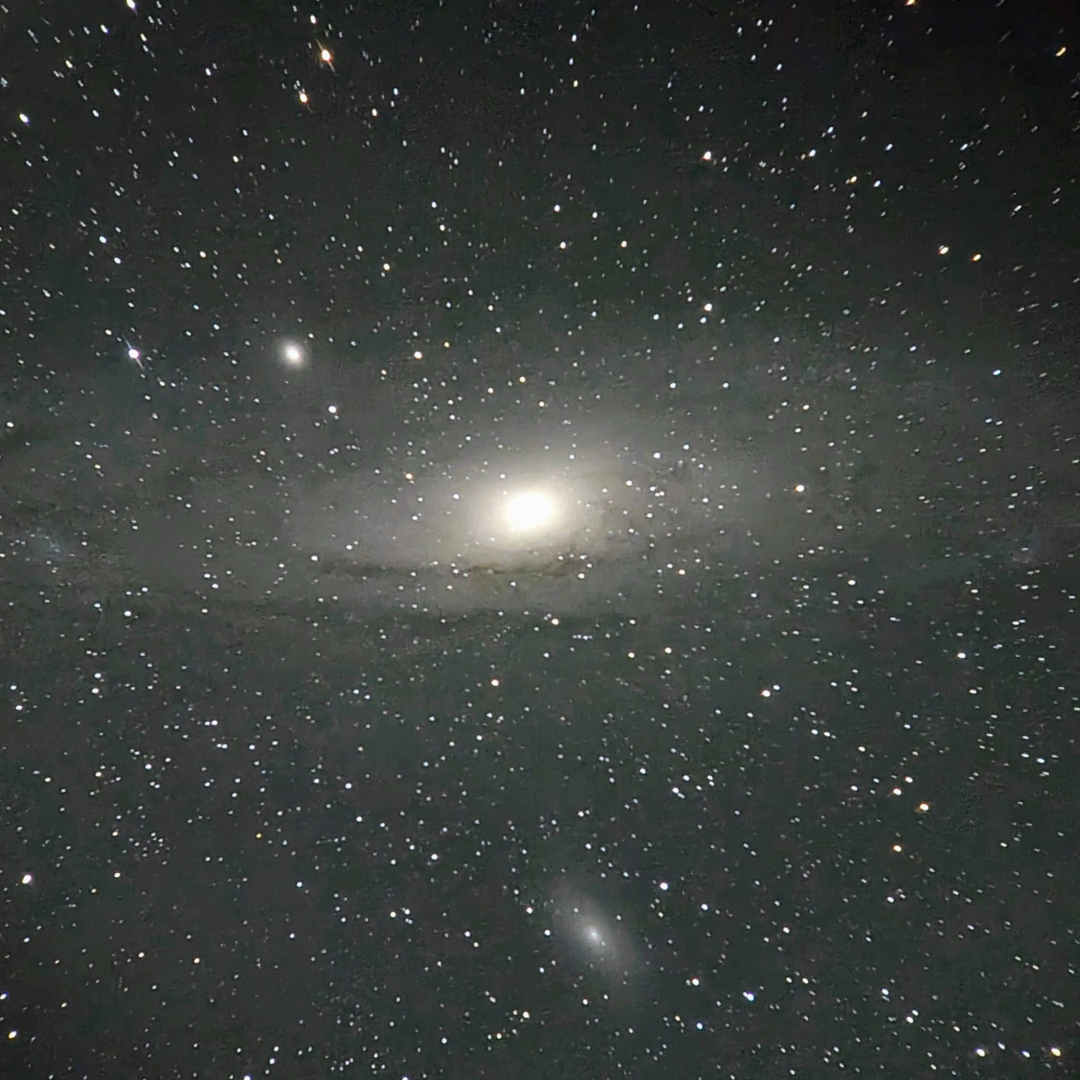Why October is the perfect time to look for the Andromeda galaxy
Catch a glimpse of the Andromeda Galaxy as it hangs high in the October night sky.
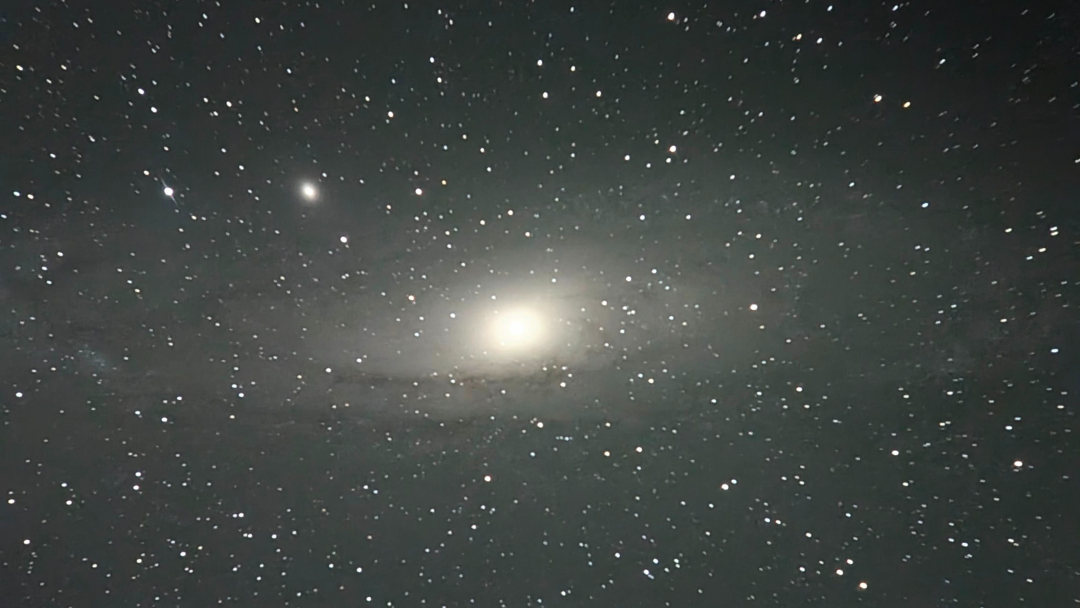
Late October presents a perfect opportunity to spot the ancient light of the Andromeda galaxy as it climbs high overhead to brighten the autumn night sky.
The Andromeda Galaxy (M31), the Milky Way's closest galactic neighbor, sits approximately 2.5 million light-years from Earth in the constellation Andromeda. It can be found rising in the east at sunset before drifting high overhead at midnight and transitioning to the northwestern sky as dawn approaches.
Andromeda's vast spiral arms span an incredible 260,000 light-years across and play host to over a trillion stars, all orbiting a supermassive black hole embedded in the galactic core, which glows with the light of ancient red stellar bodies.
Andromeda is easily visible to the naked eye from a dark sky location, taking the form of a hazy oval blur, while a telescope or binoculars will help reveal the light from its active glowing core surrounded by a diffuse haze of milky light.
How to find the Andromeda galaxy
First, locate the 'M' star formation of the constellation Cassiopeia, which appears high overhead at midnight for viewers in the U.S. The leftmost three stars will form a pointer with the bright stellar body Shedar at its tip, guiding the way to the Andromeda Galaxy
A favorite target for astrophotographers
The Andromeda galaxy is a perennial favorite among astrophotographers, who devote vast amounts of time and energy to collecting Andromeda's faint light and processing it into breathtaking galactic portraits.
One standout example comes from Ronald Brecher, who spent a grand total of 38 hours imaging Andromeda in August and September earlier this year to reveal a wealth of star formation brightening spiral arms choked with cosmic dust.
Breaking space news, the latest updates on rocket launches, skywatching events and more!
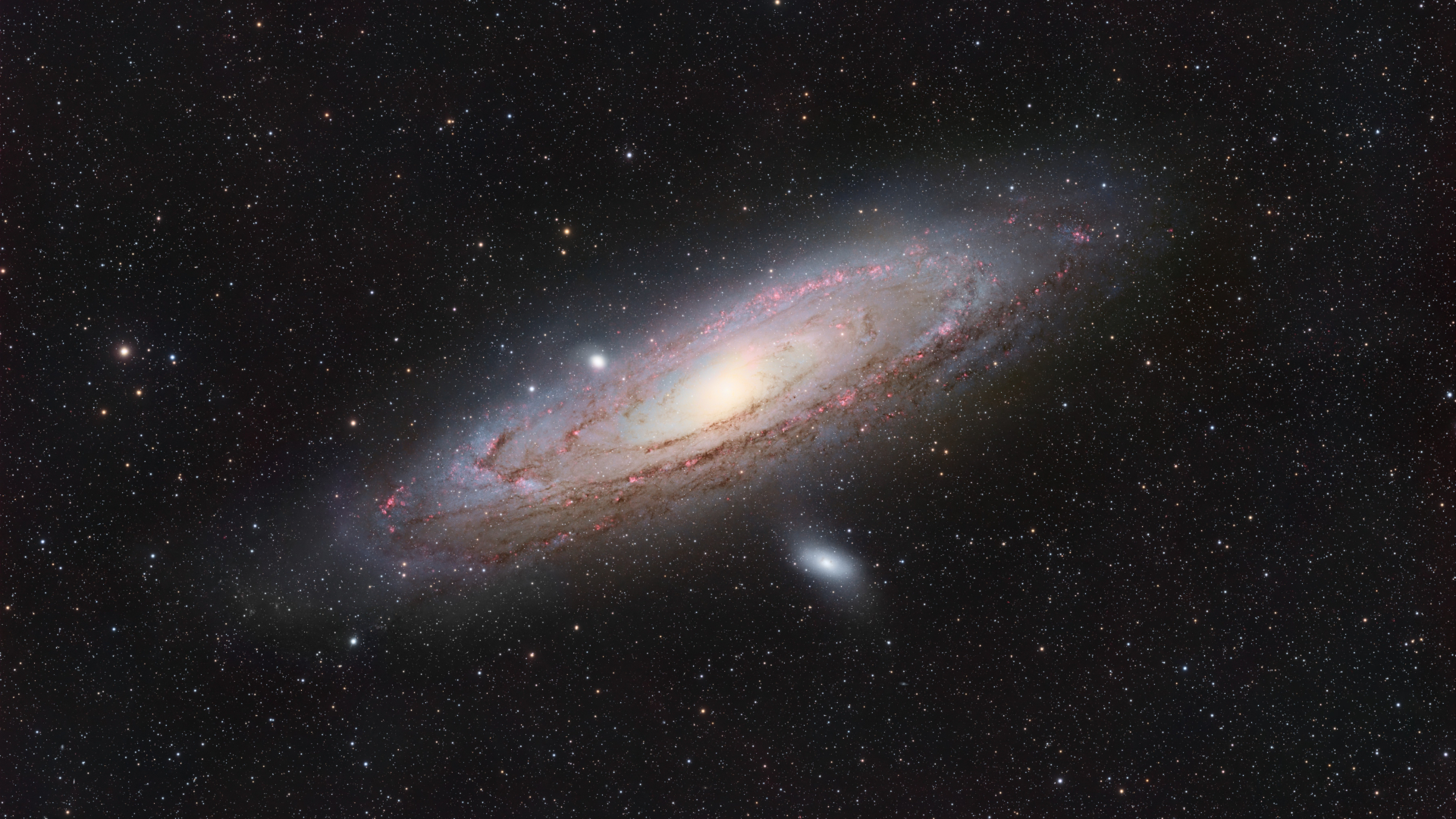
Thanks to smartphone astrophotography, anyone can now capture impressive shots of galaxies and nebulas. All you need is a phone, a telescope and an inexpensive smartphone adapter to align the camera with the eyepiece.
Smartphone astronomy advocate Jim Preusse captured a stunning view of the Andromeda galaxy using a Pixel 9 Pro smartphone camera mounted over a 56 mm eyepiece on his Orion XT 10G telescope.
"The great thing about smartphone astrophotography is that anyone can do it," Preusse told Space.com in an email. "The results are quick so you are able to view several targets in one evening. Whether viewing old favorites or new, each time out is an adventure with something new to see."
Using just a 4-minute exposure in the Pixel 9 Pro's Astro Mode, Preusse's image revealed Andromeda's bright core and sweeping dust lanes in its spiral arms. The small satellite galaxy M32 is also visible as a glowing ball to the upper left of Andromeda's core, while elliptical galaxy Messier 110 is visible below its hazy disk.
Interested in capturing the post sunset realm for yourself? Then be sure to check out our beginners guide to astrophotography, along with our roundups of the best cameras and lenses for photographing the night sky.
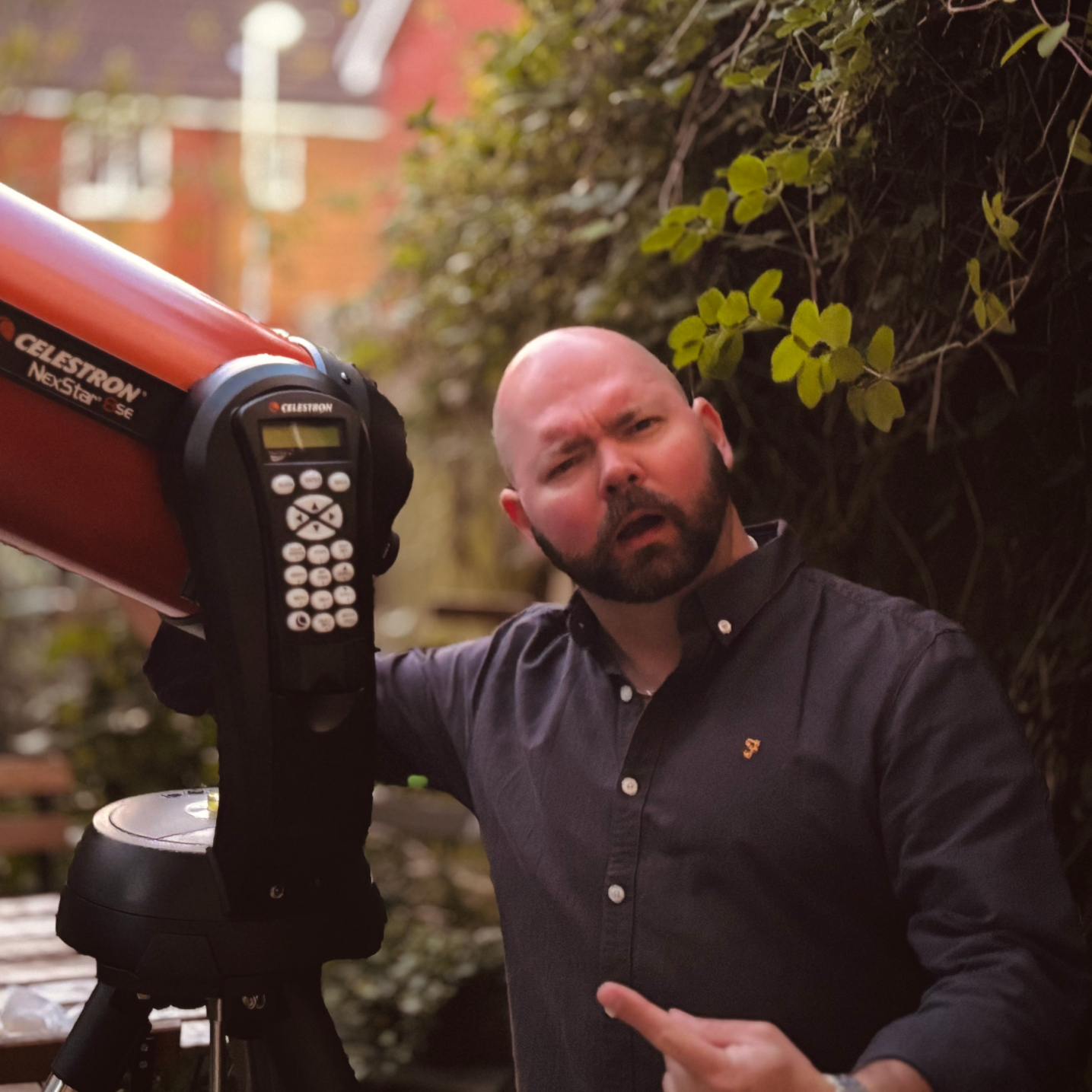
Anthony Wood joined Space.com in April 2025 after contributing articles to outlets including IGN, New Atlas and Gizmodo. He has a passion for the night sky, science, Hideo Kojima, and human space exploration, and can’t wait for the day when astronauts once again set foot on the moon.
You must confirm your public display name before commenting
Please logout and then login again, you will then be prompted to enter your display name.
